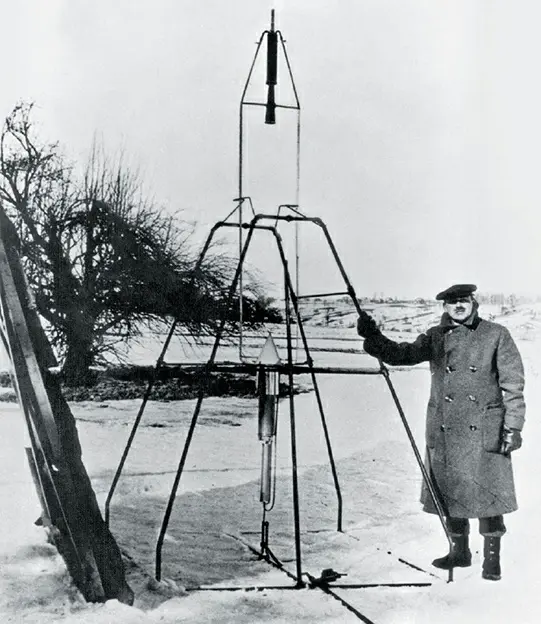The evolution of rockets from ancient gunpowder-propelled devices to sophisticated liquid-fueled machines is a tale of innovation led by key figures like Konstantin Tsiolkovsky, Robert Goddard, and Wernher von Braun. While the Chinese pioneered early rocketry for military and entertainment purposes, it was Russian mathematician Konstantin Tsiolkovsky who, in 1903, first proposed rockets as vehicles for space travel. His theoretical work laid the groundwork for modern rocketry, particularly the use of liquid fuels to enhance combustion efficiency and thrust-to-weight ratio.
American physicist and rocket scientist Robert Goddard took Tsiolkovsky’s theories from paper to practice. At Clark University, Goddard developed rockets powered by gasoline and liquid nitrous oxide, along with the innovative concept of multi-stage rockets. His pioneering work, though modest in flight achievements by current standards, established the foundational technologies for future advancements in rocketry.
German-American engineer Wernher von Braun, building on Goddard’s contributions, led a postwar team that significantly advanced rocket design, enabling longer, higher, and ultimately orbital flights. Goddard’s vision of rockets for atmospheric science and space exploration, shared by Tsiolkovsky, eventually materialized, albeit posthumously, spurred in part by the technological demands of World War II.

